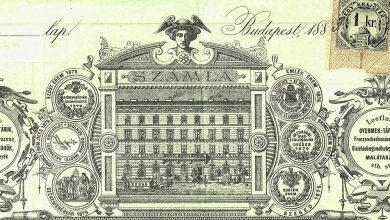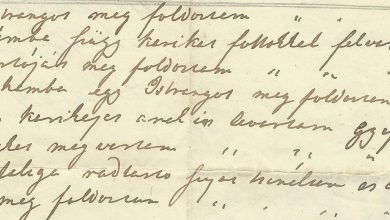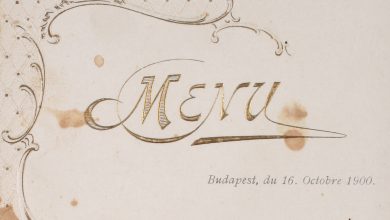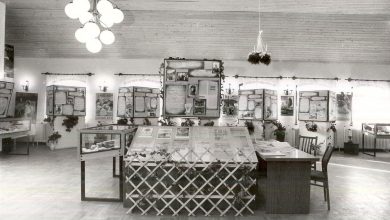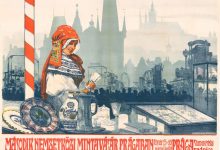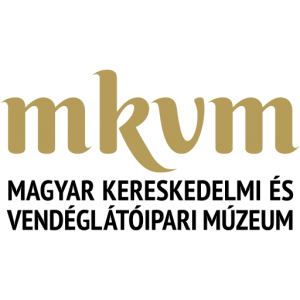Collection data:
Collection manager: Éva Oravec, Museologist
Number of pieces in the collection: 28,000 pcs
Online availability: Digitális gyűjtemény; Hungaricana
Researchability: A gyűjtemény részlegesen kutatható, előzetes bejelentkezés alapján.
About the collection:
The collection, which includes more than 28,000 objects, is a significant source of researching trade history, which is also suitable for the versatile presentation and visualization of past trade activities.
The backbone of the collection is made up of company emblems, name plates, signboards, business equipment, work tools and scales, tangible assets of commercial administration, product samples, merchandise boxes and bottles, souvenirs and advertising items. Its image was shaped by the professional museological approach.
Most of the artefacts in the collection date from the last third of the 19th century to the present day, but there are also many objects created earlier. The Object Collection of Trade can primarily serve as a source for company history and advertising history, and consequently for social history, and sometimes also for lifestyle and family history for researchers and professionals.
Structure of the collection:
- Signboards, name plates and enamel signs of companies
- Business furnishing
- Tangible assets and tools
- Measuring tools
- Goods and packaging
- Product samples
- Advertising items
- Equipment of commercial administration
- Fairs and markets
- Commercial vocational education
- Commercial souvenirs
Signboards, name plates and enamel signs of companies
The company sign boards are a small but important part of the collection, such as the ‘gold digger’ company sign from a hardware store in Tolna, the ‘black dog’ from a drug store in Pest and a spice shop in Miskolc, and the ‘bride’ from a grocery store in Vác. The versions of signboards range from portal signs to company inscriptions made of letters. A small but more exciting part of the collection is the enameled advertising boards unit, which are perhaps the most durable pieces of advertising media. The most beautiful pieces in our collection were designed by famous visual artists, such as Sándor Bortnyik’s advertisement for Schmoll’s shoe paste or Róbert Berény’s Flora soap design.
Business furnishing
The shop was the most important and visible scene of commercial activity. The majority of business furnitures in our collection belongs to spice and grocery stores. Industrial goods trade is represented by furnitures of fashion stores, haberdashery stores and shoe stores. The counter of the Jászberény hardware store (from the end of the 19th century) is unique with its drawers equipped with 135 samples of goods on the side facing the customer. The furniture of the Stühmer candy store from 1879 and the Salamander shoe store from 1913 also has an applied art value. Our toy grocery shop from the turn of the 19-20th century is considered a specialty.
Equipment and tools
These include cabinets for storage (often also serving advertising purposes), various containers, pails, pots, cheese bowls, barrels, baskets, showcase bowls, racks, etc. Special shop tools: cash registers, coffee roasters, grinders and cutting devices, dispensers, measuring spoons and shovels, twine winders, sealers, transport devices, etc. The Stollwerck chocolate machine made around 1900 occupies a special place in this group. The gas station and cigarette vending machine are artifacts of the recent past.
Measuring tools
These are indispensable material companions of commercial activity. Its first group includes scales and weights with pounds and lat divisions before instituting meter system based on the decimal number system, as well as grain meters. Measuring devices made after 1875 are represented by various types of open and closed counter balance scales, pull scales, rapid scales, space scales and intensifiers. Grain specific gravity measuring sets form a separate group. The earliest was certified in 1861.
Goods and packaging
The largest and most diverse, steadily expanding group of collections from the 1900s to the present day. Its objects are factory products, everyday objects, mass goods. We do not strive for completeness among the goods, we collect the typical ones for each profession, primarily those with a company logo or label. The collection of packaging materials, merchandise boxes (tea, cocoa, bonbons, biscuits, candy, cigarettes, fashion store, haberdashery, soap, shoe polish, etc.) and bottles (wine, beer, champagne, milk, perfume, etc.) is diverse. Specimens with a trademark are especially valuable.
Product samples
Damask and fabric sample books, sample sheets of the textile trade, sample boards of the iron trade (furniture fabrics, wire fabrics, small ironware), paper samples, perfume sample boxes, paint samples, etc. make up this collection group.
Advertising items
This collection unit is characterized by a wealth of ideas and often aesthetic sophistication. This includes advertising materials placed in stores and received from manufacturers, as well as souvenirs ‘included’ with the purchase. More than three hundred pieces of the enameled iron, painted glass, or cardboard advertising boards that decorated the shops and advertised various products survived the last century, most of them are from the 1930s. Advertising figures made of plaster and papier-mâché complete this part of the collection.
Souvenirs are usually household items: fans, mirrors, calendars, clocks, glasses, cups, tea and coffee pots, ashtrays, stationery, etc. The painted glass cup that depicts the facade of the Párisi Great Department Store, which burned down in 1903, is worth mentioning.
Commercial business administration
It mainly contains items from trading offices: desk, accounting system, bill clip, money cassette. The seal printing and stamp collection has more than five hundred pieces.
Fairs and markets
We also collect objects related to the commercial aspect of shopping (market tents, market chest, etc.). Fair wares, such as pottery, belong the collection of ethnography. Only a few typical pieces were included in our collection, such as a jar with the inscription ‘buy me, Sarah’.
Commercial vocational education
The collection group became independent during the target collection carried out in the successor institutions prior to the Commercial Vocational Education Exhibition organized in 1974. The remaining merchandise collection of the former Academy of Commerce in Debrecen (metal samples, leather, cotton, wool, various seeds, ground flour, pasta, raw materials for beer production, essential oils, paints, varnishes, etc.) numbers nearly 400 items.
Commercial souvenirs
Commemorative plaques, flags, gift boxes, goblets, decorative objects made for the jubilee of trading companies, trade associations, cooperatives, major events such as the Millennium Exhibition. Such as the silver box decorated with the figure of Mercurius on the lid, which was presented to the director of the Budapest Small and Medium Traders’ Savings and Loan Cooperative in 1904 on the occasion of the quarter-century anniversary of his work.
Collecting activity:
We focus on collecting outstanding or rare pieces from the point of view of the history of trade. Our collection is significantly expanded thanks to gifting, and our museum makes purchases in extremely rare cases. Primarily, we collect old business equipment, work tools, storage and measuring devices, mechanical equipment, packaging, transport and advertising equipment, objects used in trade vocational training, commerical souvenirs.


